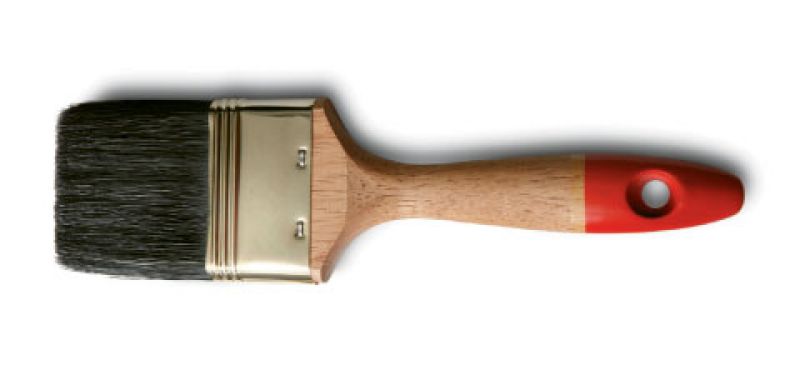
Pick the Best Finish: A paint’s finish refers to how much light it reflects: flat or matte finishes reflect no light, while high-gloss finishes reflect the natural light in the room. Choose yours based on the look you want, but more importantly, on how the room or piece of furniture will be used. Paints with a higher sheen are easier to clean but not as good at camouflaging imperfections on the surface or in the paint application. For most interior walls, flat, eggshell, and satin paints work best, while semi-gloss is a good choice for a kitchen or bathroom because it stands up well to water and cleaning. High-gloss paints are great for giving furniture a modern look and a durable finish. Tip: “Flat paint tends to show scuff marks more than other finishes,” says Fox. “However, some companies now make a scrubbable flat paint, which I think is the best invention ever: the look of matte, but easy to clean.” Do a Test Run: Don’t let your search for the right shade end in the paint store or interior designer’s office. “Make sure you love it in the actual space,” advises Fox, who suggests painting a piece of poster board with the color you’re considering. “Bigger samples can give a very different impression than tiny paint swatches.” Hang the sample in the room where you plan to use it, then watch how it changes throughout the day. “It’s amazing how different the paint can look with various amounts of natural or artificial light.” Tip: Look for the two-ounce sample sizes—a $5 investment might save you from a serious case of painter’s remorse. Question Your Motives: Is a piece of furniture just begging for the perfect shade of, well...something? Ask yourself whether you want it to stand out or blend in with the rest of your décor. “Both the paint color and the sheen will have an impact,” says Fox. “To draw attention to a funky furnishing, red is a good choice. For even more drama, pair it with a high-gloss finish.” If you want the piece to blend instead, choose a subdued hue in a satin finish. Tip: Sometimes, a room’s defining feature is its scenic view—highlight this with a neutral palette indoors. “Loud or dark pieces tend to keep your eyes inside the space,” says Fox. Narrow the Rainbow: To figure out what palettes speak to you, try taking a look inside your closet. “Often people choose to surround themselves in colors that they like to wear,” says Fox. Whether you’re planning to paint in a month or just as soon as you find that dream vintage dresser, keep an eye out for color combinations that speak to you. Clip photos from magazines, then sort through your collection before heading to the paint store—you’ll likely find a common denominator. Tip: Don’t settle on a neutral just because you think that whole color family’s foolproof. “Some earth tones can end up looking dated and drab,” cautions Fox. “Make sure you choose the color because you love it.” Tip: Don’t settle on a neutral just because you think that whole color family’s foolproof. “Some earth tones can end up looking dated and drab,” cautions Fox. “Make sure you choose the color because you love it.” Eye the Undertones: A paint’s undertones are the colors mixed to create the final hue. When it comes to popular colors like yellow and white, Fox favors those with warmer tones. “Yellow can look sickly and fluorescent—look for shades with gold undertones.” Similarly, when choosing among whites, zero in on those tinged with gold or brown to avoid a stark, sterile look. Tip: Benjamin Moore’s Adams Gold #HC-18 meets Fox’s “happy but not blinding” criteria for yellow paint. Blend, Don’t Match: “Don’t try to choose a wall paint color that is an exact match for furnishings in the room,” says Fox. “This can cause the paint and furniture to compete for attention, creating an effect that’s too bold.” Tip: Consider brown, one of Fox’s favorite paint colors. “Almost any accent color looks good with a gorgeous shade of brown.”